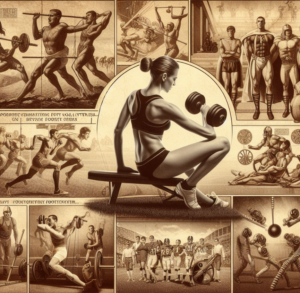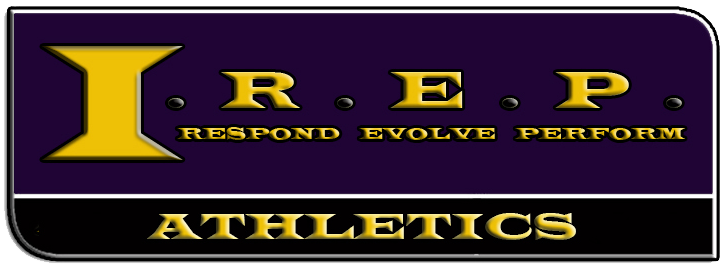 The initiation of sports training in ancient times laid the groundwork for centuries of athletic pursuits. The ancient Greeks, credited with founding the Olympic Games in 776 BC, integrated sport into their educational systems, recognizing the value of physical fitness in the development of the youth. Training methods constituted basic practices aimed at improving specific skills for events such as racing, wrestling, and the pentathlon. Training grounds like the gymnasium were central to these activities, where the physical exercise was complemented by intellectual and moral debates, reflecting the Greek ideal of a sound mind in a sound body—a philosophy known as ‘arete.’
The initiation of sports training in ancient times laid the groundwork for centuries of athletic pursuits. The ancient Greeks, credited with founding the Olympic Games in 776 BC, integrated sport into their educational systems, recognizing the value of physical fitness in the development of the youth. Training methods constituted basic practices aimed at improving specific skills for events such as racing, wrestling, and the pentathlon. Training grounds like the gymnasium were central to these activities, where the physical exercise was complemented by intellectual and moral debates, reflecting the Greek ideal of a sound mind in a sound body—a philosophy known as ‘arete.’
In ancient Rome, sports training was not only the preserve of athletes but also a crucial element in the military training of soldiers, emphasizing the importance of physical strength and combat skills. Gladiatorial schools further specialized in training for the brutal games that entertained the public in the Colosseum and other arenas of the Roman Empire.
The collapse of these civilizations led to a significant regression in the development of sports training techniques. The Middle Ages shunned the glory of physical pursuits for spiritual asceticism, rendering the progress of athletic training almost stagnant.
It was only during the Renaissance, a vibrant period of intellectual and cultural awakening that spanned the 14th to the 17th century, that sports and physical training re-emerged with vigor. A renewed appreciation for humanism and the classical ideals of Greece and Rome spurred the reclamation of physical activities as integral to the full development of the individual. The Renaissance also saw the rise of the first formalized approaches to sports training since antiquity. Educators like Vittorino da Feltre in Italy led the way in incorporating sports and games into a comprehensive educational curriculum that valued human well-being and the joy of physical activity.
In the courts of kings and the halls of academies, fencing, jousting, and dance were practiced not only for entertainment and preparation for war but increasingly as athletic disciplines requiring particular training routines. Advances in understanding of human anatomy, documented in texts such as those by Andreas Vesalius, illuminated the workings of muscles and bones, signifying a shift toward a more calculated and informed approach to physical training, which w
The Birth of Modern Athletic Training
By the dawn of the 19th century, industrial advancements had already begun to the face of society, and sports training was not immune from these influences. The age brought forth a new emphasis on the pursuit of efficiency and optimization, qualities that naturally extended to realms of physical education and competitive sports. This period signaled the onset of a more scientific approach to athletic training, increasingly steering it toward what we recognize today as modern sports training methodologies.
The industrial revolution catalyzed urbanization and changes in social structures, which created both challenges and opportunities for sports and physical training. With the growth of urban centers came limited spaces for physical activity, but it also spurred the construction of new facilities such as public swimming pools, gymnasiums, and eventually, sports clubs and associations. These institutions became hubs for innovation in training techniques and fostered the development of new sports disciplines.
One of the key hallmarks of this era was the establishment of standardized rules across various sports. This standardization was desperately needed to facilitate fair play and to handle the increasing number of regional and national competitions that were emerging. With rules in place, trainers and coaches were able to devise specific training programs to enhance athletes’ performances within the set frameworks of their sports. This era saw the origins of competitive team sports such as soccer, rugby, and basketball, each demanding tailored training methods that focused on team coordination and sport-specific skills.
The burgeoning respect for scientific inquiry into human physiology and the emerging field of sports medicine started to provide insights into how the body responded to physical exertion. No longer were athletes limited to casual observation and traditional wisdom in their training. They began to incorporate this newfound knowledge into their regimens, learning to train smarter, not just harder.
The late 19th and early 20th centuries also witnessed the rebirth of the modern Olympic Games, an international sporting event that heralded the need for more structured and sophisticated training to achieve excellence. Athletes from different nations strove to gain competitive edges, underlining the importance of consistent and methodical preparation. Training became a year-round endeavor, rather than a slate of activities athletes would engage in shortly before major competitions.
In response to the relative lack of expertise in how to train effectively for optimum performance, the role of the coach as an essential part of an athlete’s success story began to take shape. These early coaches were often former athletes themselves who used their own experiences to guide their protégés. The need for a deeper, more scientific understanding of training practices led to the formation of coaching as a professional vocation. This period set the stage for contemporary coaching certifications and the recognition of coaching as a distinct profession.
Advancements in the Science of Training
The 20th century marked an era of rigorous scientific inquiry into sports and athletic performance. Academia took an increased interest in the physiology of exercise, which led to the establishment of sports science as a recognized field of study. Pioneers like Dr. Thomas K. Cureton at the University of Illinois underscored the relevance of research in optimizing physical training, highlighting the application of scientifically grounded methods.
Alongside physiological research, sports psychology also made great strides, delving into the impact of mindset, motivation, and stress on athletic performance. Research by psychologists such as Rainer Martens helped legitimate mental training as a complement to physical preparation, fostering a more holistic approach to sports training.
The evolution of sports medicine fortified the relationship between athletic training and health care. The development of arthroscopy, for instance, revolutionized the treatment and rehabilitation of joint injuries, allowing athletes to recover more quickly and efficiently than ever before.
The Contemporary Landscape
Today, sports training is an intricate tapestry that synthesizes cutting-edge technology and comprehensive scientific insights. The role of analytics in sports has grown exponentially, allowing coaches and sports scientists to dissect performance metrics and tailor training at an individual level like never before. The rise of wearable technology, for example, enables real-time monitoring of athletes’ physiological and biomechanical data, facilitating immediate feedback and adjustments to training protocols.
Cognitive training tools, such as neurofeedback systems, have expanded training domains beyond physical attributes, addressing the cognitive aspects of performance. These tools can sharpen an athlete’s focus, decision-making skills, and resilience under pressure, affirming the necessity of mental acuity in the pursuit of peak performance.
Technological advances such as virtual reality (VR) and augmented reality (AR) are pushing the boundaries of training environments, allowing athletes to simulate and practice within virtual settings that closely mimic actual competition situations.
